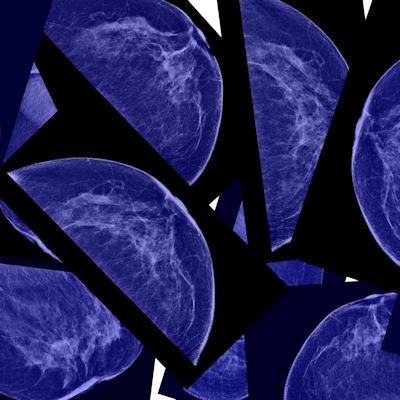
Immediately reading screening mammograms during the COVID-19 pandemic reduced healthcare disparities while speeding up workflow, according to research published September 8 in the American Journal of Roentgenology.
A team led by Dr. Brian Dontchos from Massachusetts General Hospital and Harvard Medical School found that their immediate-read screening mammography program reduced prior racial and ethnic disparities by increasing the odds of having same-day diagnostic imaging after abnormal screening mammograms.
"This immediate-read screening program provides a new paradigm for improved screening mammography workflow that allows more rapid completion of diagnostic workup with reduced disparities in care," Dontchos and colleagues said.
The COVID-19 pandemic heightened healthcare disparities, including for breast cancer care. Previous research found lower odds of undergoing screening mammography for Black and Hispanic women compared with white women.
Dontchos et al. cited the need for second visits between screening mammograms and diagnostic imaging in contributing to disparities in the time to breast cancer diagnosis. They wanted to measure the impact of their own immediate-read screening mammography program in reducing patient visits and decreasing time to diagnostic imaging. However, such programs have met resistance from mammography practices because prior research found increases in abnormal interpretation rates and in costs compared with traditional batch reading.
The Brigham and Women's Hospital study honed in on disparities in same-day diagnostic imaging after abnormal screening mammograms. The program for immediately reading screening mammograms was implemented in May 2020 near the height of the pandemic in the U.S.
A dedicated breast imaging radiologist interpreted all screening mammograms in real-time, with patients receiving their results before being discharged. If any additional diagnostic imaging was recommended and performed, the same radiologist handled the diagnostic imaging exam along with a breast imaging fellow, according to the researchers.
The study authors compared results from June 1 to October 31, 2020, with the same time period in 2019. The 2019 timeframe included 8,222 breast imaging examinations, 521 of which were abnormal screenings, while the 2020 period had 7,235 examinations with 359 abnormal screenings.
| Improvements after implementing immediate reading of screening mammograms | |||
| Measure | Preimplementation | Postimplementation | p-value |
| Median time from screening examination completion to report finalization | 61 minutes | 4 minutes | < 0.001 |
| Average time to diagnostic examination | 9.6 days | 3.6 days | < 0.001 |
| Median time to diagnostic examination | 8 days | 0 days | < 0.001 |
| Patients receiving a same-day diagnostic examination following an abnormal screening examination | 14.8% | 60.7% | < 0.001 |
The screening abnormal interpretation rate decreased for the 2020 period from 6.3 to 5 (p < 0.001).
Among women with an abnormal screening mammogram during the postimplementation period, those who received same-day diagnostic exams were found to be older and more often had government-subsidized insurance.
Before the program's implementation, patients who were of a race other than white had lower odds than white patients of having same-day diagnostic imaging after abnormal screening examinations, with an adjusted odds ratio of 0.3 (p = 0.03). However, the odds ratio for other races increased to 0.92 after implementation -- a result that no longer represented a statistically significant difference compared with the odds for white women (p = 0.80).
The researchers said the program's promise in reducing disparities is also consistent with results from a previously described same-day breast biopsy program that Dontchos also co-authored. For that study, the authors found no evidence of racial, ethnic, or insurance disparities in time from biopsy recommendation to performance after implementation of the same-day biopsy program.
Before the immediate-read screening program's implementation, such reads were offered by the hospital, though on an informal ad-hoc basis. The researchers said their data suggests that the ad-hoc practice introduced disparities in care.
"We believe the practice is sustainable and not limited to only a transient period of lower-than-normal screening volumes," the study authors said.




















